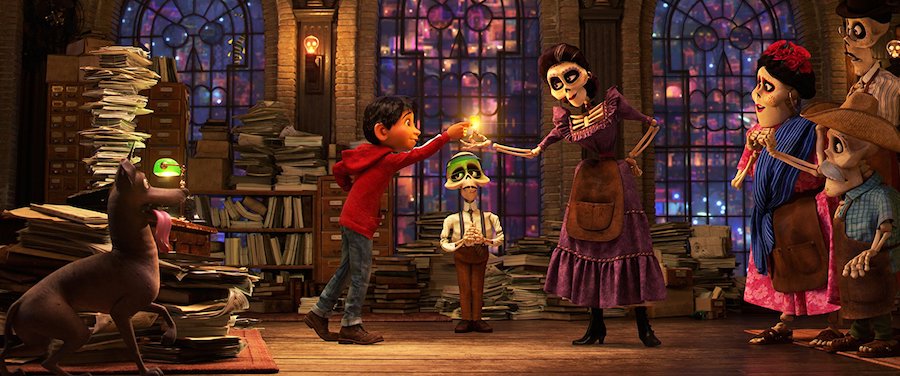When people think of the Day of the Dead, they probably imagine skulls and tombstones — not necessarily the most festive images to associate with a holiday. The new Pixar animated masterpiece “Coco,” released November 22, seeks to reimagine this image. Directed by Lee Unkrich and Adrian Molina, “Coco” highlights the beauty of humanity and the strength of family that is hidden in this supposedly eerie Latin holiday.
With his family obstinately opposed to music of any kind, aspiring singer Miguel (Anthony Gonzalez, “Imagination of Young”) ventures into the Land of the Dead to uncover the mystery of this generations-old ban and find the freedom to pursue his dream.
The Technique had the opportunity to interview Susan Fong, a Georgia Tech alum, about her experience working on the movie. As rendering and optimization supervisor, she oversaw the part of the animation process called rendering, in which each graphic element is compiled to become the animated image viewers see on the silver screen.
Her work is laborious. To develop a single frame of the movie, it may take eighty hours. One frame is one-twenty-fourth of a second. “Coco” runs for an hour and 49 minutes. Do the math — it is a time-consuming process.
Not only that, but the graphics of “Coco” are unlike any previous Pixar film: “We’re pushing the boundary of what’s possible,” Ms. Fong said. In creating the Land of the Dead, there was a tremendous amount of geometric detail that had to be configured to convey the “sense of scale” associated with the “eons of history” contained in that single place. “It’s an unprecedented amount of data being put on the screen.”
The characters, too, were a challenge. Since most of them are skeletons, there was an unexpected issue concerning how clothing would fit them. “We’re used to seeing [cloth] on a filled-out human. Putting it on bones and making it appealing was a challenge.”
When watching the film, few of those technical difficulties are noticed. Rather, viewers are enchanted and dazzled by the stunning graphic design, the charisma within the songs and dialogue and the genuine cultural spirit of the film. Somehow, the dead characters come alive, and the audience is transported across physical and temporal boundaries into the captivating world of Miguel’s ancestry.
So, can a movie like this get political? Gael Garcia Bernal, who plays Héctor, dedicated the film to all children with Mexican and Latin American heritage who “are growing up with a lot of fear because the established narrative says that they come from families that come from rapists, murderers, and drug traffickers.” In that view, “Coco” is in direct contrast to Trump’s message of xenophobia and “America first.”
Ms. Fong does not see the film in a political light. “Coco” was thought of years ago, predating any recent political turmoil. She acknowledged that “we can’t expect how others will respond to a piece of art.” However a viewer specifically interprets it, the themes of familial love, acceptance and universality put forth in the film are a strong and noble statement, one that is hopefully embraced by everyone this holiday season.
